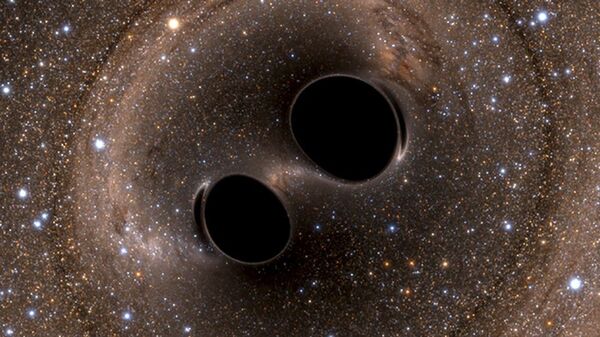Researchers have zoomed in on a signal from potentially the largest black hole merger detected in gravitational waves.
#GW190521 is a special discovery: it's the first clear detection of an "Intermediate Mass Black Hole" #imbh – a kind of cosmic “missing link” in the #BlackHoles landscape, which may have a key role in how supermassive #BlackHoles form #imbh https://t.co/LrUU9qvnJO pic.twitter.com/khj2UmQMc3
— LIGO (@LIGO) September 2, 2020
The findings, reported by an international LIGO and Virgo Collaboration of scientists, including researchers from the Institute for Gravitational Wave Astronomy at the University of Birmingham, were reported in Physical Review Letters and The Astrophysical Journal Letters.
The report states that the signal, designated GW190521, was observed on 21 May 2019 with the help of two instruments: the US National Science Foundation's Laser Interferometer Gravitational-wave Observatory (LIGO), a pair of identical, 4-kilometer-long interferometers; and Virgo, a 3-kilometer-long detector in Italy.
The result of the merger marks the first distinct detection of an "intermediate-mass" black hole, with the brief signal lasting less than one-tenth of a second.
Researchers believe it was generated by a source that is approximately 5 gigaparsecs away, when the universe was about half its current age.
If that is correct, this signal makes it the most distant gravitational-wave source detected so far.
Resorting to computational and modeling tools, the team of scientists think that GW190521 was generated by a binary black hole merger, believed to be the most massive yet, involving two black holes with masses about 85 and 65 times the mass of the sun.

The result of the merger created an even more massive black hole, of about 142 solar masses.
The subsequently released energy, equivalent to about eight solar masses, took the form of gravitational waves, spreading across the universe.
"This doesn't look much like a chirp, which is what we typically detect," said a member of the Virgo team Nelson Christensen, a researcher at the French National Centre for Scientific Research (CNRS).
The scientist compared the signal to LIGO's first detection of gravitational waves in 2015.
"This is more like something that goes 'bang,' and it's the most massive signal LIGO and Virgo have seen," he was quoted as saying.
All the black holes observed before this detected signal were either stellar-mass black holes, or supermassive black holes.

What makes the GW190521 intriguing is that its final 142-solar-mass black hole is the first of its kind - an intermediate mass range between stellar-mass and supermassive black hole.
The ‘Wobbling’ Black Holes
The LIGO-Virgo team also discovered that if their assumptions were correct, and the signal was produced by the merger of two black holes, their spin axis was “misaligned” - not parallel to the orbital angular momentum.
“In this unusual merger, we see the first hint that black holes may be tumbling in space. Future observations will certainly shed more light on this phenomenon”, said Dr Patricia Schmidt, lecturer at the Institute for Gravitational Wave Astronomy.
Check out our cool #GW190521 infographic too - you can find it (and lots more images and animations) at https://t.co/LrUU9qvnJO #imbh #MostMassiveYet @LIGO @ego_virgo #GW190521 pic.twitter.com/XX0TOoHMdo
— LIGO (@LIGO) September 2, 2020
Speaking of the astrophysical implications of the findings, Pedro Marronetti, program director for gravitational physics at the National Science Foundation, said:
"LIGO once again surprises us not just with the detection of black holes in sizes that are difficult to explain, but doing it using techniques that were not designed specifically for stellar mergers… This … showcases the instrument's ability to detect signals from completely unforeseen astrophysical events."


